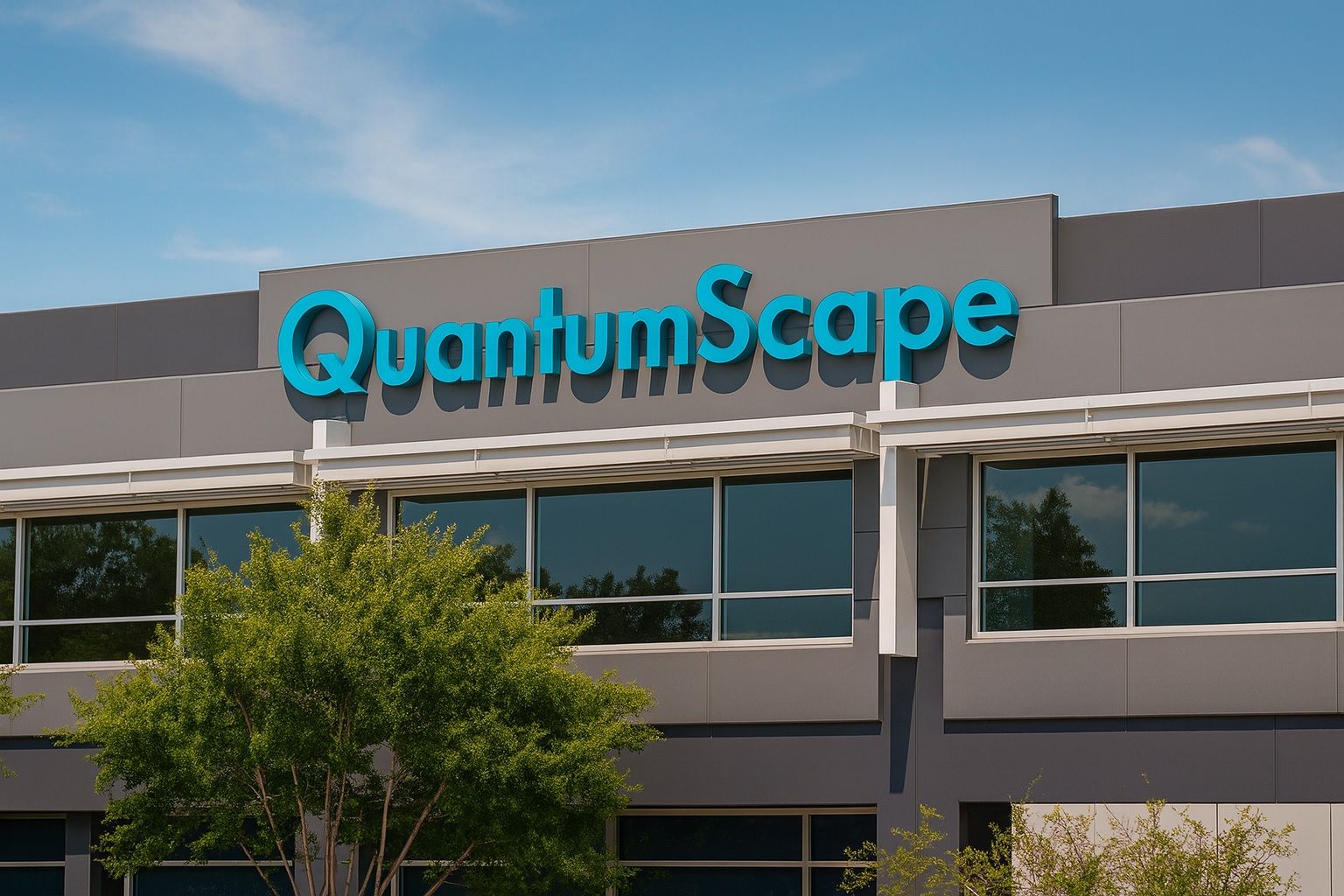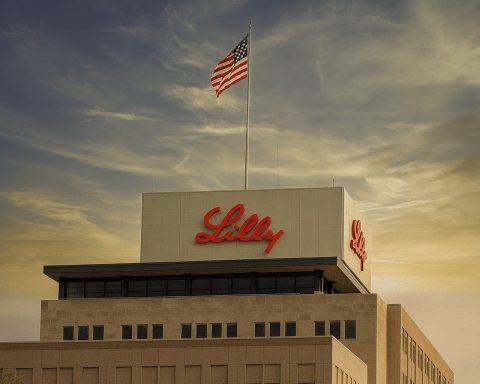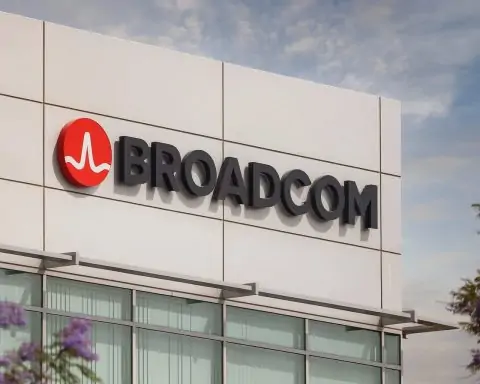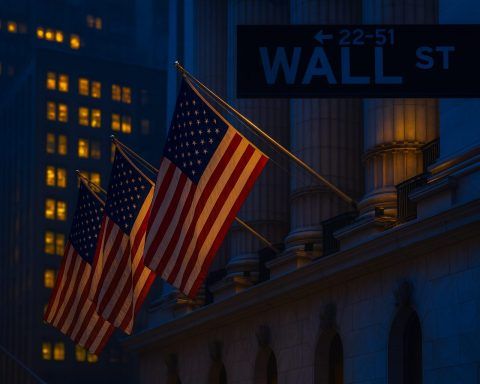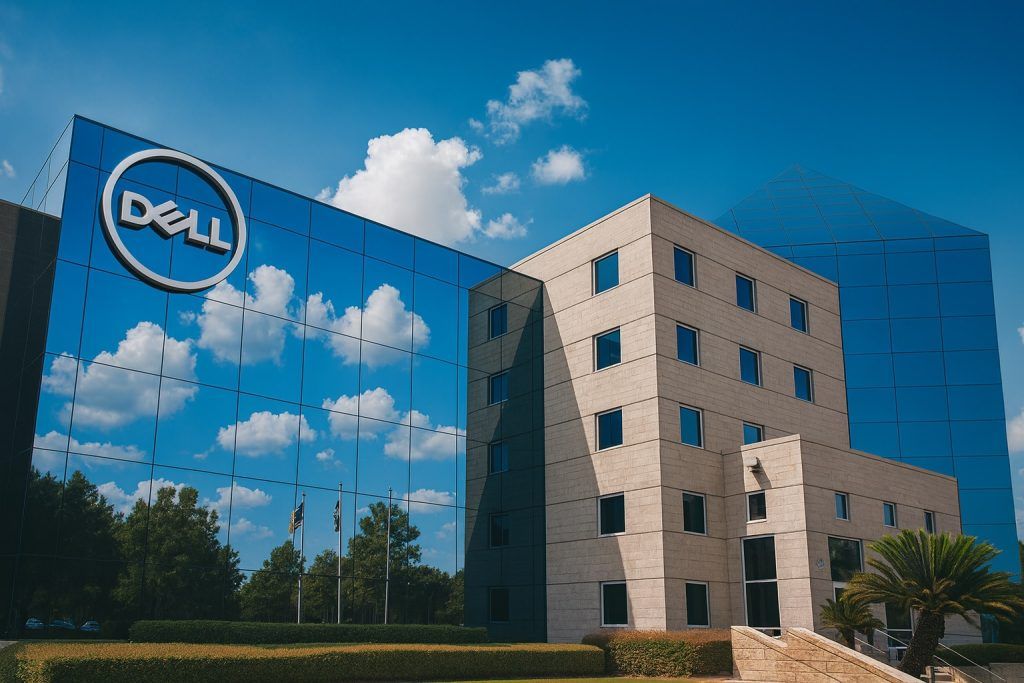- Stock Skyrockets: QuantumScape (NYSE: QS) shares have surged roughly +170% in 2025, closing at $15.92 on Oct 3 (an 11% jump that day) – near a 52-week high around $16 [1]. The solid-state battery developer’s stock is trading in the mid-$15s this week, a dramatic rebound from its ~$3 low earlier in the year [2], vastly outpacing the broader market.
- Breakthrough Developments: A flurry of positive news sparked the rally. On Sept 30, QuantumScape announced a landmark partnership with Corning Inc. to co-develop its ceramic solid-state battery separators – a deal analysts hailed as “a major vote of confidence” in QuantumScape’s technology [3]. Around the same time, at the Munich IAA auto show, a Ducati electric motorcycle prototype using QuantumScape’s latest battery cells demonstrated an impressive 844 Wh/L energy density and charging from 10% to 80% in ~12 minutes [4]. This first-ever public vehicle demo of QS’s battery technology bolstered its credibility with investors and industry observers.
- New Partnership Pact: Momentum continued into October as QuantumScape expanded a joint development agreement with Japan’s Murata Manufacturing (announced Oct 8) to accelerate mass production of its ceramic separators [5]. “Partnership with Murata is an important part of building a robust global ecosystem of suppliers to support the commercialization of QuantumScape’s solid-state battery technology,” said QuantumScape CEO Dr. Siva Sivaram [6]. The Murata deal, alongside the Corning collaboration, further validates QS’s tech and provides manufacturing expertise to help scale up production.
- Sector-Wide EV Battery Buzz: QuantumScape’s breakthroughs have lifted the entire solid-state battery sector. Rival startups Solid Power (SLDP) and SES AI (SES) saw their stocks jump ~7% and ~17% respectively in early October, riding QS’s coattails [7]. Major automakers are racing to commercialize solid-state batteries too – for example, Toyota aims for 2027–28 and Nissan by 2029 [8] – underscoring intense competition in next-gen EV batteries. Even traditional lithium-ion battery makers are quietly investing in solid-state R&D, highlighting the high stakes of this “battery holy grail.”
- Analysts Urge Caution: Despite the euphoria, Wall Street remains skeptical of QuantumScape’s valuation. Most analysts rate QS “Sell” or “Reduce,” with an average 12-month price target around $5–6 per share [9] – over 60% below current levels. They warn that QuantumScape’s ~$9+ billion market cap is built on future promise (the company has no product revenue yet) and that it must prove its technology at scale to justify the hype [10]. In other words, enormous execution risks remain, and today’s lofty stock price could backfire if technical milestones slip.
QuantumScape’s High-Voltage Rally Explained
QuantumScape’s stock went into “blast-off mode” in late September and early October 2025, buoyed by major developments in its technology and partnerships. After trading flat around $12–$13 through mid-September, QS suddenly broke out on successive news catalysts: it jumped 18% on Sept 18, then another +18.4% on Oct 1, ultimately hitting an intraday high of $16.49 by Oct 3 [11]. The Oct 3 close at $15.92 capped a stunning ~30% gain in one week and a ~172% year-to-date rise [12].
This rally far outpaced broader markets and made QuantumScape one of 2025’s top-performing tech stocks. Trading volume spiked as momentum traders piled in once shares cleared key resistance around $15 [13]. “A clean move above $15 could trigger a momentum run,” one chart analyst observed on Oct 1 – a prophecy that quickly proved true as stop-orders and algorithms drove QS to new highs [14]. By early October, euphoric sentiment took hold among retail investors betting on a coming EV battery revolution.
However, not everyone chased the hype. Some traders warned that the mid-$14s had been a historic ceiling for QS and that the stock was becoming overbought after such a vertical climb [15]. Indeed, after peaking above $16, QuantumScape pulled back slightly to the mid-$15 range by Oct 7. Market veterans note that QS has a history of extreme volatility (its beta is ~4.4, indicating high sensitivity to market swings [16]). Back in the SPAC boom of 2021, QS briefly traded around $130+ per share, only to collapse below $20 in subsequent years. The latest surge, while impressive, still leaves the stock well below those 2021 highs – a reminder of how dramatically fortunes can swing for this speculative battery maker [17].
Breakthrough Battery Tech and First Real-World Demo
At the heart of QuantumScape’s appeal is its next-generation solid-state battery technology. Unlike conventional EV batteries that use liquid electrolytes, QuantumScape’s cells use a proprietary ceramic solid electrolyte separator and an “anode-free” lithium-metal design. This architecture could deliver major advantages: faster charging, higher energy density, improved safety (no flammable liquid), and longer lifespan. According to the company, its batteries can charge to 80% in under 15 minutes and offer greater energy storage per weight/volume than today’s lithium-ion packs [18].
Skeptics have long pressed QuantumScape to prove these lab claims in an actual vehicle – and in September 2025, QS provided the first public evidence. At the IAA Mobility show in Munich, Volkswagen’s battery division (PowerCo) unveiled a Ducati electric racing motorcycle powered by QuantumScape’s prototype cells [19]. The results turned heads: the Ducati’s solid-state battery achieved roughly 844 Wh/L energy density (far above typical EV batteries’ ~500-700 Wh/L) and demonstrated ultra-fast charging from 10% to 80% in around 12 minutes [20]. It also delivered high power output (supporting a 10C continuous discharge suitable for racing speeds). This marked the first-ever real-world demo of QuantumScape’s technology in a vehicle – a milestone that went a long way toward silencing critics who claimed QS’s performance figures were hype.
Industry experts noted that while the Ducati prototype was just a small-scale demo, it showcased the potential of solid-state cells to enable things like high-performance electric motorcycles or sports cars with quick pit-stop charging. Volkswagen – QuantumScape’s largest investor – was clearly pleased: just a few weeks before the demo, VW’s PowerCo had agreed to invest an additional $131 million in QuantumScape (tied to development milestones) to help accelerate QS’s pilot production line [21] [22]. This vote of confidence from an automotive giant reinforced that if QuantumScape’s tech works at scale, there will be eager customers.
Still, major technical hurdles remain. Even after demonstrating a single 7 kWh motorcycle pack, QuantumScape must scale up to much larger multi-layer cells suitable for cars, ensure consistent quality in mass production, and prove durability over thousands of charge cycles. Solid-state batteries are notoriously tricky to manufacture due to issues like forming defect-free ceramic layers and preventing lithium dendrites. The Ducati demo was a proof-of-concept, but the road from prototype to commercial product is long and winding – as QuantumScape’s own management admits.
Big-Name Partnerships Fueling Credibility and Scale-Up
One reason QuantumScape’s recent announcements have excited investors is the pedigree of its partners. The company isn’t trying to go it alone in bringing solid-state batteries to market; instead, it’s aligning with established industry leaders to de-risk the scale-up. The most prominent partner is Volkswagen, which has been intertwined with QuantumScape for a decade. VW has invested hundreds of millions into QS and currently owns about 17% of the company [23]. In 2024, VW’s PowerCo unit struck a landmark deal to license QuantumScape’s technology and potentially build up to 40 GWh per year of production capacity by 2028 using QS’s cells [24]. Essentially, Volkswagen has positioned itself to be first in line to mass-produce QuantumScape’s batteries for its own EVs as soon as the tech is ready – a huge vote of confidence in QS. The additional $131M in funding that VW committed in 2025 (contingent on technical milestones) extended QuantumScape’s cash runway into 2029, about 6 months further than prior estimates [25] [26]. According to QS CFO Kevin Hettrich, these VW milestone payments will help fund QuantumScape’s operations into the late 2020s [27], giving the startup more breathing room to reach commercialization.
In late September 2025, QuantumScape unveiled another major alliance – this time with Corning Inc., a world-renowned glass and ceramics company. Corning agreed to co-develop the high-volume manufacturing processes for QuantumScape’s ceramic separators (the thin solid electrolyte sheets at the core of each cell) [28] [29]. Industry analysts immediately saw this as an external validation of QuantumScape’s technology. Corning’s expertise in advanced ceramics could be a game-changer for scaling up QS’s production: “a major vote of confidence” is how one analyst described the partnership [30]. By leveraging Corning’s know-how in materials science and mass manufacturing, QuantumScape aims to solve one of its toughest challenges – producing defect-free ceramic separators quickly and cheaply in large quantities. Investors cheered the news; the morning after the Corning deal was announced, QS stock gapped about 15% higher and kept climbing [31] [32].
Hot on the heels of Corning, QuantumScape expanded its partnership with Murata Manufacturing, announced on Oct 8, 2025. Murata is a Japanese electronics and ceramics powerhouse (known for components like capacitors) that had already been working with QS earlier in the year on ceramic materials. The new joint development agreement will see Murata apply its deep ceramics expertise to help mass-produce QuantumScape’s ceramic separator film [33] [34]. “We are pleased to continue our collaboration with Murata, a world-class ceramics manufacturer, as we work together to advance the high-volume production of our ceramic separators,” said CEO Siva Sivaram, emphasizing that Murata is now an “important part” of QS’s supply chain ecosystem [35]. Murata’s President, Norio Nakajima, echoed the optimism, stating the company will “leverage its strengths in ceramics technology” to contribute to QS’s scale-up [36]. This partnership, along with Corning’s, gives QuantumScape multiple heavyweight allies tackling the manufacturing side of the equation – a critical factor in whether QS can meet its goal of starting commercial production by 2028.
Beyond these, QuantumScape has hinted at other partnerships in the works. In its Q2’25 update, the company disclosed a new joint development agreement with an unnamed major automaker (besides VW) [37]. This suggests at least one more global car company is actively evaluating QuantumScape’s cells. Such collaborations indicate that interest in QS’s technology is widening beyond just Volkswagen, potentially diversifying its future customer base. All told, QuantumScape’s strategy of building an ecosystem of big partners – automakers to eventually buy and build the batteries, and materials specialists to help manufacture them – could accelerate its path to market while sharing the enormous costs of development. It’s a model similar to what other battery startups (like Solid Power with Ford/BMW) are doing to spread risk.
Financial Picture: Pre-Revenue Company Betting on the Future
Amid the technical breakthroughs and stock frenzy, it’s important to remember that QuantumScape is still pre-revenue. The company is essentially a R&D-stage startup that has yet to sell a commercial product. In Q2 2025, QuantumScape reported virtually no product revenue – only a few million dollars in service revenue from collaborative projects [38]. It continues to burn cash developing prototypes and scaling its pilot manufacturing line. In that quarter alone, QS had operating expenses of about $123.6 million (mostly research & development) and a net loss of $114.7 million [39]. For the full year 2025, management expects an adjusted EBITDA loss around $250–270 million and only token revenue, since meaningful commercial sales likely won’t begin until 2027-2028 at the earliest [40].
The good news is that QuantumScape is well-capitalized for now. As of mid-2025, the company held roughly $800 million in liquidity (cash and investments) on its balance sheet [41]. Thanks to fundraising during the SPAC boom and strategic investments from partners like VW, QS has built a war chest to finance a few more years of development. With careful budgeting, the company estimates it has enough cash to fund operations through 2027 or 2028 (into the start of pilot production) [42]. The expanded Volkswagen deal – which provides up to $131M in milestone payments – was key to extending that “cash runway into 2029,” according to QuantumScape’s latest guidance [43]. Each successful technical milestone (for example, delivering the next batch of prototype cells) triggers payments that effectively subsidize QS’s R&D costs. Likewise, partnerships like Corning and Murata may allow QuantumScape to share some development and scale-up costs with those larger firms [44].
However, if unexpected hurdles or delays occur, QuantumScape might need to raise additional capital. Building even a pilot production line, then a full-scale gigafactory, is enormously expensive. Many of QS’s SPAC-era peers have had to issue more stock or take on debt as timelines slipped. QuantumScape’s management has been adamant about “keeping one eye on the cash burn rate” to avoid running out of funds before revenues kick in [45]. Nonetheless, the risk of future dilution (issuing more shares) is real if the company faces cost overruns or if commercialization takes longer than hoped. Investors should also note that rising interest rates and risk aversion in markets have made funding tech startups more challenging than a few years ago.
In sum, QS’s $9+ billion valuation today is premised almost entirely on future prospects rather than current financials. Bulls argue that this is the nature of investing in a potential “game-changing” technology early – you’re valuing the enormous market opportunity if it succeeds. Bears counter that the valuation looks stretched and fragile: any sign of trouble could send the stock tumbling, given QuantumScape’s lack of earnings or proven product. The company’s ability to hit its 2025–2026 milestones (delivering its next-gen prototype batteries, a.k.a. B-samples, to automakers for testing, followed by C-sample commercial-ready cells by 2026–27 [46]) will heavily influence whether it can maintain its market confidence. Until revenues materialize, QS’s stock will trade more on technical updates and partnership news than on traditional metrics – a double-edged sword that can drive huge volatility on both the upside and downside.
Wall Street’s Take: Hype vs. Skepticism
The QuantumScape saga presents a classic divide between visionary optimism and cautious realism. On one hand, many retail investors and tech enthusiasts are enthralled by QS’s potential to revolutionize EV batteries. After all, if QuantumScape’s solid-state cells live up to their billing, the company could eventually supply batteries to a significant slice of the massive EV market. Some analysts have pointed out that solid-state batteries could enable cheaper, longer-range, faster-charging EVs, potentially accelerating EV adoption worldwide. It’s no surprise then that QuantumScape has often been dubbed a “moonshot” stock – high risk, but with the promise of transforming a trillion-dollar industry if successful.
Notably, even some normally skeptical commentators see reasons for optimism after the recent progress. Motley Fool analyst Eric Volkman, for example, acknowledged that QuantumScape’s stock had “zoomed nearly 140%” this year (far outpacing the S&P 500) but argued “there are very good reasons for the rally”. He maintains that “QuantumScape remains a buy thanks to a future that could be – pardon the expression – very electric.” [47] [48] The bullish thesis is that QuantumScape’s technology and strategic partnerships position it to lead the solid-state battery race, and that long-term investors might reap enormous rewards if the company eventually commercializes successfully. Proponents also note that Volkswagen’s backing isn’t just financial – VW’s plan to build factories for QS cells suggests a built-in pathway from lab to market. That kind of endorsement from a top automaker is something most battery startups lack.
On the other hand, most Wall Street firms urge caution. The consensus 12-month price target for QS is only about $5.88 per share, according to a compilation of nine analysts [49]. Even the highest bullish estimate in that group is $11, while the lowest is $2.50 – all well below the current ~$15 price [50]. In aggregate, analysts rate the stock a “Reduce/Sell,” effectively advising that it’s overvalued relative to near-term fundamentals [51]. Their reasoning: QuantumScape faces years of costly development ahead, generates zero meaningful revenue, and operates in a field where many competitors (from startups like Solid Power to giants like Toyota) are also racing forward [52]. “QuantumScape’s lofty valuation hinges on future technical success, since the company has no revenue yet,” one report warned, emphasizing that QS must “prove its technology at scale to justify the hype.” [53] With so much uncertainty, conservative analysts prefer to wait until QuantumScape demonstrates more tangible results (like a viable commercial prototype or initial sales) – even if that means missing out on some early gains.
It’s also worth recalling how volatile and speculative QS stock has been in the past. The company went public via SPAC in late 2020 amid enormous fanfare (it was often cited as one of the most promising EV tech startups). In December 2020, the stock famously spiked above $130, briefly valuing the pre-revenue firm at over $50 billion, before crashing back down as technical challenges emerged [54]. That boom-and-bust journey left many investors wary. Short-sellers and skeptics have at times targeted QuantumScape, questioning whether its battery performance is as good as advertised and whether it can fend off competition. While QS has addressed some earlier doubts (for instance, demonstrating better battery longevity data over 400+ cycles in 2022–2023, and now the Ducati demo), the burden of proof remains on the company to show it can translate scientific breakthroughs into a manufacturable product.
In short, sentiment on QS is sharply divided. Enthusiasts see a potential “Tesla of batteries” in the making, while skeptics see a stock priced for perfection in an imperfect, nascent technology field. This dynamic is likely to continue generating big swings on news – good or bad – as the market digests each new data point on QuantumScape’s progress.
Outlook and Forecast: Charging Ahead or Short-Circuiting?
Looking ahead, the next couple of years will be make-or-break for QuantumScape. The company has laid out an ambitious roadmap: deliver “B-sample” prototype batteries to automakers by 2025–26, move to “C-sample” (commercial-ready) validation by 2026–27, and if all goes well, start mass production around 2028 [55]. Hitting these targets could position QuantumScape as one of the first (if not the first) to bring true solid-state EV batteries to market. The total addressable market is huge – tens of millions of EVs expected later this decade, plus applications in grid storage and consumer electronics – so the upside for a successful pioneer is enormous.
Bullish scenario: Analysts note that if QuantumScape executes well from here, the stock could have more room to run. A 2025 analysis on TECHi outlined that in a bull case – where QS successfully scales its Cobra manufacturing process, secures milestone payments, and lands initial customer deals – the share price might approach the upper end of current analyst targets (~$10–$11 in the next year) [56]. Over a multi-year horizon, true success in commercialization could of course justify much higher valuations. Some optimists even speculate that QS could eventually trade back toward its previous highs (though that likely requires proving the tech and building factories at scale, a feat still many years out).
Base case: In a more tempered scenario, QuantumScape makes incremental progress but also encounters typical startup challenges. Perhaps its batteries work, but scaling up takes longer or costs more than expected. In that case, QS might end up drifting lower or trading range-bound as the initial hype wears off and the reality of slow revenue growth sets in. The TECHi analysis suggested a middling case could see the stock settle in the mid-single digits ($5–7) as the excitement cools and dilution concerns rise [57]. Essentially, the company might survive and inch forward, but without the kind of breakthrough success needed to thrill the market in the near term.
Bearish scenario: Of course, there’s the possibility that things go awry – a technical setback (e.g. an unforeseen problem with battery longevity or manufacturability), a major delay, or a tightening capital environment forcing an equity raise. In a downside case, QuantumScape’s stock could plummet back toward the low end of analyst estimates (around $2–3), wiping out much of the 2025 gains [58]. If the solid-state dream started to look unviable or far-off, investor sentiment could turn sharply, as it has in the past. The history of clean-tech startups is littered with examples of promising technologies that took far longer than anticipated to commercialize, often to the detriment of early shareholders.
Crucially, the timeline for solid-state batteries industry-wide is still measured in years. Even bullish forecasts don’t see meaningful volumes of solid-state cells in mass-market cars until the late 2020s or early 2030s [59]. Toyota and other giants are aiming for 2027+ for their first models; QuantumScape’s own plan targets 2028. That means investors in QS need patience and a tolerance for volatility. In the interim, every quarterly update and partnership announcement will be parsed for signs of progress. (Notably, QuantumScape’s next earnings report in late October 2025 is expected to provide updates on its pilot line and prototype deliveries – news that could move the stock yet again.)
Bottom line: QuantumScape offers a high-risk, high-reward proposition. The recent surge to 52-week highs shows that excitement around its battery breakthrough is alive and well. The company’s solid-state technology, if successfully commercialized, could be a game-changer for electric vehicles – potentially delivering safer batteries with fast-charging and long range that attract major auto contracts. QuantumScape’s growing list of blue-chip partners (VW, Corning, Murata, etc.) lends it credibility and resources to tackle the enormous challenges ahead. However, the stock’s lofty valuation already reflects a lot of future success, and execution risks are immense. As one investment research firm put it, “it’s a marathon, not a sprint” for solid-state batteries [60] – the real payoff, if it comes, won’t be overnight.
For investors, the key will be watching how well QuantumScape meets its milestones on the road to 2028. Will this high-flying EV battery bet keep charging ahead, or will the circuit short out? The answer will hinge on science and engineering feats still to come. In the meantime, expect the ride to remain volatile. As Wall Street’s cautious stance highlights, hope and hype alone can only carry a stock so far – eventually, QuantumScape will need to deliver results as solid as its state-of-the-art batteries.
Sources: QuantumScape and partner press releases; Tech media analyses and stock reports [61] [62] [63] [64] [65]; expert commentary from Motley Fool and market analysts [66] [67]; QuantumScape Q2’25 shareholder letter and financial data [68] [69]; sector news on EV battery competition [70]; Investing.com market coverage [71] [72].
References
1. ts2.tech, 2. ts2.tech, 3. ts2.tech, 4. ts2.tech, 5. www.investing.com, 6. www.investing.com, 7. ts2.tech, 8. ts2.tech, 9. ts2.tech, 10. ts2.tech, 11. ts2.tech, 12. ts2.tech, 13. ts2.tech, 14. ts2.tech, 15. ts2.tech, 16. ts2.tech, 17. ts2.tech, 18. www.sharewise.com, 19. ts2.tech, 20. ts2.tech, 21. ts2.tech, 22. ts2.tech, 23. ts2.tech, 24. ts2.tech, 25. ts2.tech, 26. ts2.tech, 27. ts2.tech, 28. ts2.tech, 29. ts2.tech, 30. ts2.tech, 31. ts2.tech, 32. ts2.tech, 33. www.investing.com, 34. www.investing.com, 35. www.investing.com, 36. www.investing.com, 37. ts2.tech, 38. ts2.tech, 39. ts2.tech, 40. ts2.tech, 41. ts2.tech, 42. ts2.tech, 43. ts2.tech, 44. ts2.tech, 45. ts2.tech, 46. ts2.tech, 47. www.sharewise.com, 48. www.sharewise.com, 49. ts2.tech, 50. ts2.tech, 51. ts2.tech, 52. ts2.tech, 53. ts2.tech, 54. ts2.tech, 55. ts2.tech, 56. ts2.tech, 57. ts2.tech, 58. ts2.tech, 59. ts2.tech, 60. ts2.tech, 61. ts2.tech, 62. ts2.tech, 63. www.investing.com, 64. ts2.tech, 65. ts2.tech, 66. www.sharewise.com, 67. ts2.tech, 68. ts2.tech, 69. ts2.tech, 70. ts2.tech, 71. www.investing.com, 72. www.investing.com
